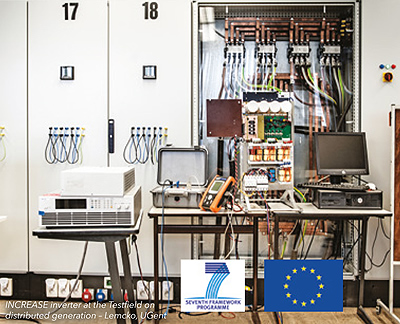 The significant rise in distributed renewable energy sources (DRES) has placed an enormous burden on the secure operation of the electrical grid, impacting both the transmission system operators (TSOs) and distribution system operators (DSOs). The massive increase of the intermittent DRES in low (LV) and medium (MV) networks has led to a bidirectional power flow, which raises the urgent need for new operational and control strategies in order to maintain the ability of the system operator to provide the consumers a reliable supply of electricity at an acceptable power quality level.
The significant rise in distributed renewable energy sources (DRES) has placed an enormous burden on the secure operation of the electrical grid, impacting both the transmission system operators (TSOs) and distribution system operators (DSOs). The massive increase of the intermittent DRES in low (LV) and medium (MV) networks has led to a bidirectional power flow, which raises the urgent need for new operational and control strategies in order to maintain the ability of the system operator to provide the consumers a reliable supply of electricity at an acceptable power quality level.
Technically, INCREASE focuses on how to manage renewable energy sources in LV and MV networks, to provide ancillary services (towards DSOs, but also TSOs), in particular voltage control and the provision of reserve. INCREASE investigates the regulatory framework, grid code structure and ancillary market mechanisms, and proposes adjustments to facilitate successful provisioning of ancillary services that are necessary for the operation of the electricity grid, including flexible market products.
INCREASE proposes a three level approach. The first level only uses local parameters (voltage at the point of connection, exchanged power) for the control. This is a fast control that will mitigate the voltage unbalance (at the LV network) and uses P-V droops to achieve soft curtailment to solve the overvoltage problem (at the LV and MV network). The first level control ensures the reliability and stability of the system. The second level control will result in an optimal system and aims to minimise the loss of renewable energy. This second level control is achieved by a multi-agent aggregator concept and consists of fair power sharing, the coordination of OLTC control and PV inverters to solve (current and voltage) congestion. In order for the DSO to evolve from congestion manager to capacity manager, a service layer is required. This service layer is the third level in the INCREASE approach. It solves a multi-objective optimisation problem by combining and extending optimisation strategies and results in flexible energy products to provide Ancillary Services with them. The DSO always needs to have control over the grid in order to prevent that the DR and DRES schedules worsen the supply security. For this purpose, a Traffic Light System (TLS) is used that gives the DSOs the ultimate control over the DR unit schedules.
INCREASE enables DRES and loads to go beyond just exchanging power with the grid, which enables the DSO to evolve from congestion manager to capacity manager. This will result in a more efficient exploitation of the current grid capacity, thus facilitating higher DRES penetration at reduced cost. Because of the more efficient use
of the existing infrastructure, grid tariffs could decrease, potentially resulting in a lower cost for the consumers. The INCREASE simulation platform enables the validation of the proposed solutions and provides the DSOs with a tool they can use to investigate the influence of DRES on their distribution network. The INCREASE solutions will also be validated (i) by lab tests, as well as (ii) in four field trials in the real-life operational distribution network of Energienetze Steiermark in Austria, of Eandis in Belgium, of Elektro Gorenjska in Slovenia, and of Liander in the Netherlands.
CONTACT DETAILS
www.project-increase.eu
Dr. ir. Bart Meersman: Bart.Meersman@UGent.be
Mag. Andreas Türk, MBA: Andreas.Tuerk@joanneum.at